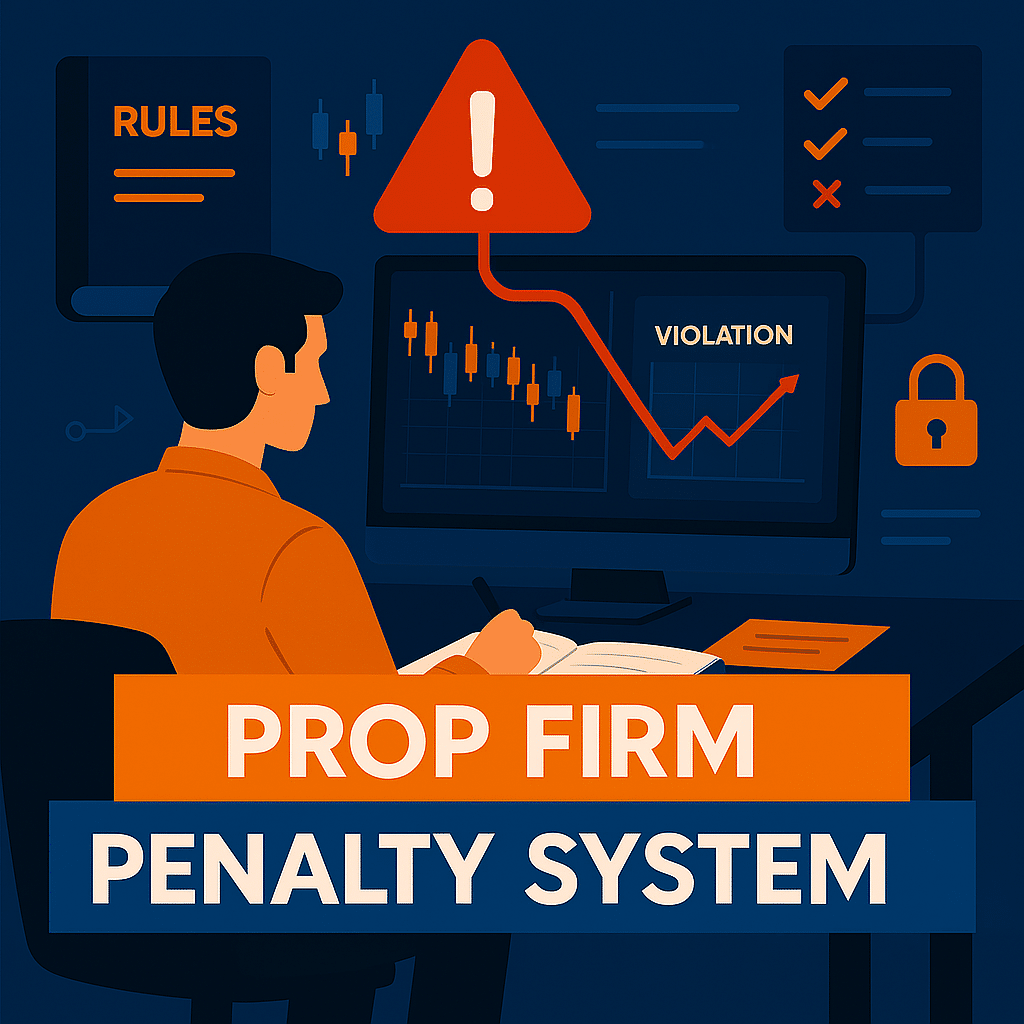Prop Firm Penalty System: Understanding Penalties in Prop Firm Challenges
The prop firm penalty system plays a major role in determining whether a trader succeeds or fails during a trading evaluation. While traders often focus on hitting profit targets, understanding the rules and penalties involved is just as important—especially when working toward a funded account with a firm like Larsa Capital.
Breaking rules during the challenge phase can lead to disqualification, no matter how profitable your trades are. That’s why it’s crucial to know what actions trigger penalties, how they affect your status, and how to avoid them altogether.
Why the Prop Firm Penalty System Matters
Many aspiring traders underestimate how strict the prop firm penalty system can be. Most firms—including Larsa Capital—design these systems to ensure traders demonstrate discipline, risk management, and long-term thinking.
While profit is essential, it isn’t everything. Violating specific trading rules can lead to account termination or a failed evaluation—even if you’re in profit. That’s why being consistent in following guidelines is just as critical as making winning trades.
Moreover, penalties exist to mimic real-world capital management. If a trader is careless with a funded account, the cost to the firm is real. Therefore, the evaluation process includes safeguards that weed out reckless behavior early.
Key Rules That Trigger Penalties
To help traders stay compliant, it’s important to recognize the most common violations that can activate the penalty system:
Daily Drawdown Limits
Exceeding a maximum daily loss limit, often set between 4% to 5%, will usually end the challenge immediately. These limits protect both trader and firm from aggressive risk-taking.
Overall Loss Limits
Cumulative drawdowns—such as breaching a 10% total loss cap—are another common reason for disqualification. Even one bad trade without proper stop-loss can end your progress.
Minimum Trading Days
If a challenge requires you to trade for at least 5 or 10 days, completing the profit target early doesn’t exempt you from this rule. Skipping this requirement could void your success.
Over-leveraging
Using higher position sizes than permitted will often trigger a breach. Each firm, including Larsa Capital, defines its own risk parameters tied to leverage.
Holding Trades Overnight or Over the Weekend
Unless explicitly allowed, holding positions during restricted hours may result in a penalty—even if the trade was profitable.
Navigating the Prop Firm Penalty System Effectively
So, how can traders stay compliant while optimizing their performance?
The key is awareness. Before starting any challenge, read all the rules thoroughly. Traders with Larsa Capital receive a clear set of guidelines before entering the evaluation phase, making it easier to avoid unexpected breaches.
It’s also helpful to track your risk exposure in real-time. Many successful traders maintain a log or use alerts to monitor their drawdown thresholds, keeping them informed and proactive. Additionally, having a consistent trading routine ensures you don’t forget critical rules like minimum active days.
Lastly, avoid shortcuts. Trying to “game the system” usually backfires. Prop firms reward consistency and discipline—traits that are proven through rule-compliant performance.
Penalties Aren’t Meant to Punish—They’re Built to Protect
The prop firm penalty system may seem strict at first, but it’s designed to simulate the reality of managing substantial capital responsibly. By understanding and respecting these rules, you improve your chances of passing the challenge and becoming a successful funded trader with Larsa Capital.
Rather than viewing penalties as obstacles, treat them as structure. They encourage better habits, improve your risk management, and ultimately set the foundation for long-term success.
If you’re preparing to take on a challenge, remember: your strategy should include more than just entries and exits. It should also include full awareness of the prop firm penalty system, so you can trade with both confidence and compliance.

